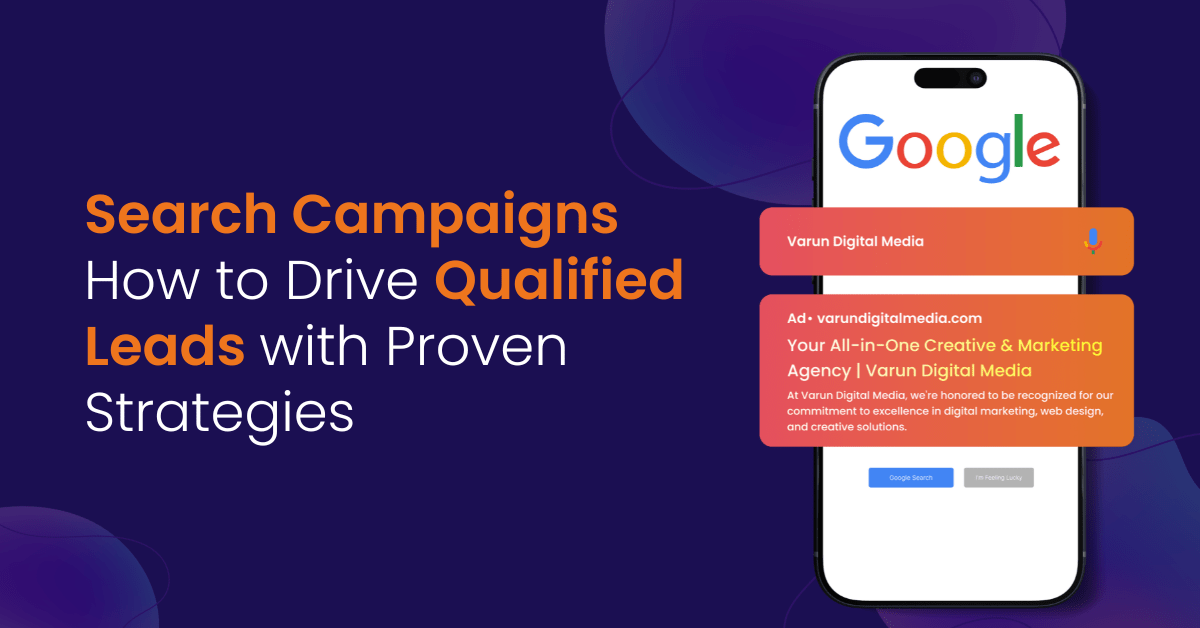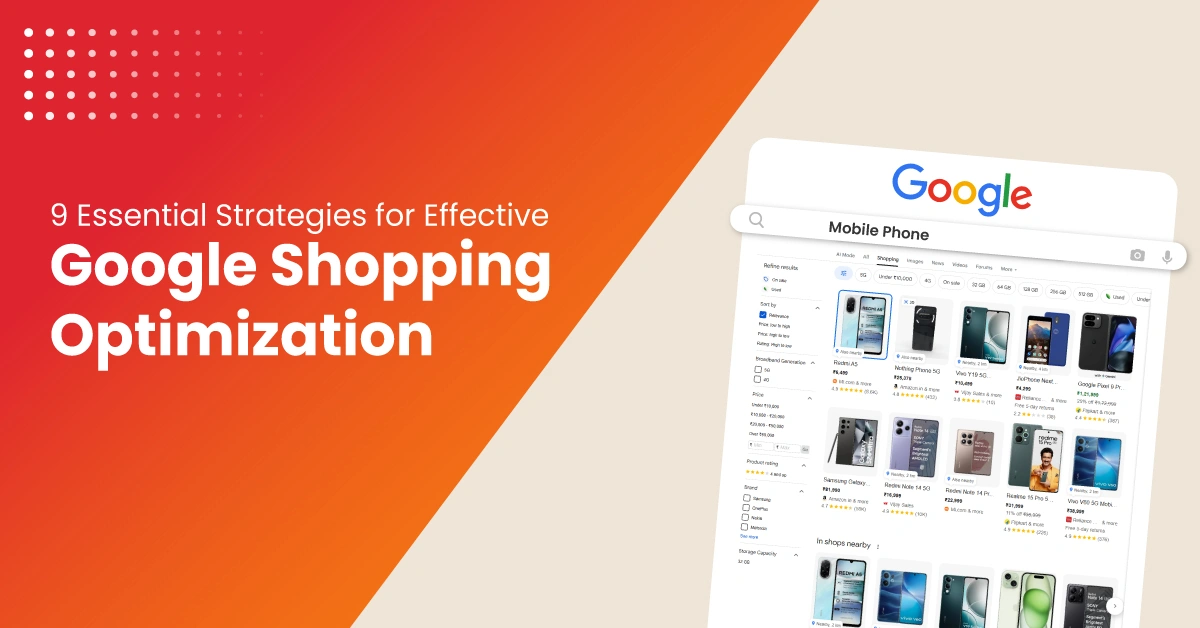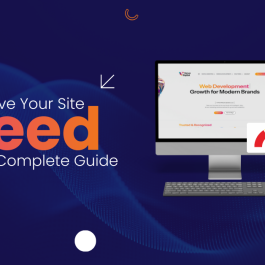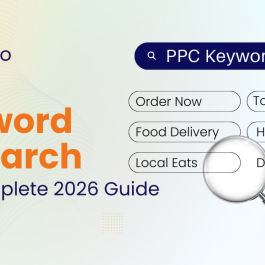6 min read
Table of Contents
Introduction to Search Campaigns
Search campaigns are a key part of digital marketing. They help drive qualified leads and conversions. Google Ads owns 73% of the paid search market. It offers strong tools to reach your target audience well.
A good search campaign brings in high-quality leads. It helps boost conversions and grow revenue. By learning search campaign basics and setup, businesses can get more online views and meet marketing goals. You should watch key metrics like conversion rates, cost per conversion, and return on ad spend (ROAS).
Setting Up a Search Campaign
To set up a search campaign, businesses must find their target audience. They need to pick high-intent keywords that fit well. Then, create clear and strong ad copy. Doing good keyword research and making campaigns for buyer intent helps a lot.
Ad copy should be clear, short, and relevant. It needs a strong call-to-action (CTA) to raise conversions. Setting up conversion tracking is very important. It helps measure success and make smart choices. Google Ads offers many ad types like text, image, and video to reach the right people.
Understanding the Buying Journey
The buying journey shows how customers think about buying. It has stages: awareness, consideration, and decision. Knowing these helps make better search campaigns. Finding your ideal customer persona (ICP) helps you attract qualified leads.
Businesses should change ad copy and targeting for each stage. This way, they get more conversions. They must talk to the pain points and needs of their audience. The buying journey depends on data like consumer data, behavior, and purchase intent.
Targeting High Intent Users
High-intent users look actively for products like yours. To reach them, use right keywords, ad copy, and landing pages. These must match their search words. Use negative keywords to block bad searches. This cuts wasted spend and makes ads better.
Google Ads lets you target by keywords, age, interests, and more. Focusing on high-intent users helps boost conversions and save money.
Creating Effective Ad Copy
Good ad copy is clear, short, and fits the audience. It must have a strong CTA and show your unique value. Tailor ad copy for each buying journey stage. Match it to your audience’s needs and pain points.
Use responsive search ads (RSAs) to get more views. RSAs let you add many headlines and descriptions. Google picks the best ones to show. Also, make sure ad copy works well on mobile. Many users search on phones.
Using Display Campaigns
Display campaigns help reach more people and build brand awareness. The Google Display Network (GDN) has many ad types like images and videos. You can target by age, interests, and behavior.
Use display campaigns with search campaigns. They help nurture leads and raise conversions by reaching specific groups.
Optimizing Landing Pages
Landing pages are key in search campaigns. They give a clear place for customers to act. Pages should have clear headlines, good images, and strong CTAs.
Use A/B testing and good design to improve landing pages. This can raise conversions by over 500%. Make pages mobile-friendly and fast to give a good user experience.
Using Lead Form Extensions
Lead form extensions let businesses collect leads right from search ads. This makes lead generation easier and faster. Use them with other extensions like site links and callouts to get more views.
Lead Forms in Discovery Ads help get consumers based on their interests. Targeting high-intent users with lead forms raises leads and conversions.
Content Marketing Strategies
Content marketing is key in digital marketing. It helps attract and engage your audience. Use blogs, videos, and social media to build brand awareness and trust. Together with search campaigns, content marketing nurtures leads and boosts conversions.
Giving useful resources and insights makes your brand a leader. This raises online views and gets more qualified leads.
Targeting & Segmentation
1. Demographic and Geo-Targeting
Demographic and geo-targeting make search campaigns sharper. Demographic targeting uses age, gender, and income to find the right users. Geo-targeting shows ads by location for more relevance. This cuts wasted spend and brings qualified leads who are more likely to buy.
2. Using Remarketing to Re-engage Visitors
Remarketing shows ads to people who visited your site but did not act. It keeps your brand in front of them. This encourages them to come back and fill out lead forms. Remarketing raises conversions, nurtures leads, and makes campaigns work better.
3. Device and Time-of-Day Targeting
Device and time-of-day targeting help show ads at the best times. Device targeting adjusts for desktop, tablet, or mobile users. This fits their habits and how they convert. Time-of-day targeting shows ads when users are most active. This raises lead quality and cuts wasted spend.
Measuring Campaign Success
Measuring success is key to know how well a search campaign works. Watch metrics like conversion rates, cost per conversion, ROAS, clicks, and impressions.
Use data and analytics to match campaigns to marketing goals. Find ways to improve and get better results.
Common Mistakes to Avoid
Avoid mistakes like poor keyword research, weak ad copy, and low budgets. Pick specific long-tail keywords, not broad ones, to reach the right people.
Ad copy must be clear, short, and relevant with a strong CTA. Use only the best ad extensions to avoid clutter. Avoiding these errors makes campaigns better and gets more qualified leads.
Using Data to Inform Search Campaigns
Data and analytics guide search campaign choices. Use Google Ads metrics like clicks, impressions, and conversions to check performance. Use this data to improve keywords, ad copy, and landing pages. This helps get more qualified leads.
The Future of Search Campaigns
The future uses AI and machine learning to make campaigns better and automatic. Use Google Ads tools like automated bids and ad extensions to get more views and reach.
Campaigns will be more personal and data-driven. Content marketing and social media stay key to give useful insights, build brand, and get qualified leads. Staying up to date helps make search campaigns better and attract more qualified leads.
Turn Clicks into Customers – Start Driving Qualified Leads with
Varun Digital Media Now
Frequently Asked Questions (FAQs)
1. What are qualified leads in search campaigns?
Qualified leads are potential customers who fit your ideal customer profile. They have shown real interest and have the budget and authority to buy. They are more likely to become paying customers. This makes them very valuable for your sales and marketing teams.
2. How can Google Ads campaigns help generate qualified leads?
Google Ads campaigns let you target specific audience segments. You can use high-intent keywords, demographic data, and behavioral targeting. By making strong ad copy and using tools like lead form extensions, you can attract relevant leads and boost conversions.
3. What is the importance of ad group segmentation in search campaigns?
Ad group segmentation helps you organize your campaigns. It groups related keywords and ads together. This improves targeting, lets you share budgets well, and makes your campaigns work better by showing more relevant ads to your audience.
4. How do lead magnets support lead generation strategies?
Lead magnets like free trials, eBooks, or helpful resources give quick value to potential customers. In return, they share their contact details. This helps you attract highly qualified leads and guide them through the sales funnel.
5. Why is lead nurturing essential after capturing leads?
Lead nurturing builds and keeps relationships with leads through the buyer’s journey. Regular, personal communication raises conversion rates. It moves leads closer to buying.
6. What metrics should I track to measure the success of my search campaigns?
Track key metrics like conversion rates, cost per conversion, click-through rates (CTR), and return on ad spend (ROAS). Watching these helps you improve campaign performance. It also makes sure your marketing brings in qualified leads.
7. How can I avoid attracting unqualified or low-value leads?
Use precise targeting with high-intent keywords. Add negative keywords to block bad searches. Write pre-qualifying ad copy. Also, set clear conversion goals and use lead scoring. These steps help sales focus on the best leads.
8. What role does content marketing play in attracting qualified leads?
Content marketing gives valuable resources and insights. This builds your brand’s trust. SEO-optimized content pulls in inbound leads. It answers customer pain points and guides them through the buyer’s journey.
9. How soon should I follow up with a lead after they show interest?
Timing is key. Contact leads within five minutes of their inquiry. This greatly raises engagement and chance of conversion. Use automated tools to make sure follow-ups are quick.
10. Can display campaigns complement search campaigns in lead generation?
Yes, display campaigns widen your reach with visual ads. They target specific audience segments. When you use them with search campaigns, they help nurture leads and build brand awareness. This leads to more conversions.
Published: October 24th, 2025





